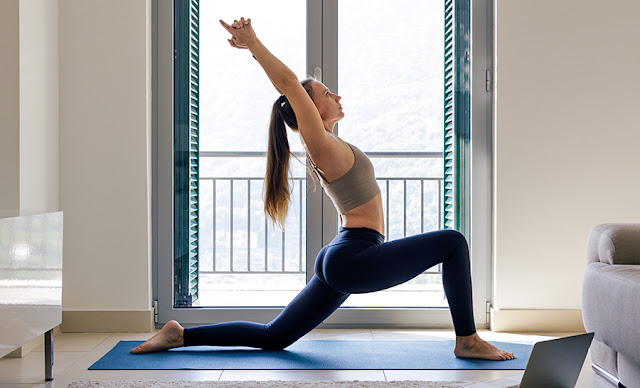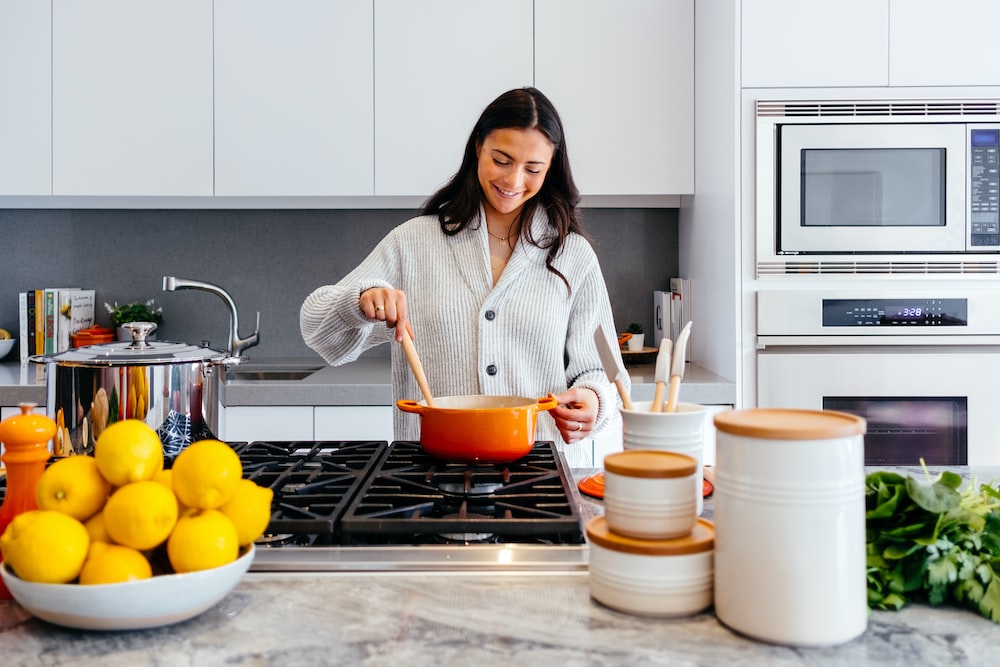Yoga for Beginners at Home
Welcome to the remaining guide for novices trying to embark on their yoga journey from the consolation in their very own homes. In this complete article, we are able to discover the transformative energy of yoga and the way it can help you find stability in all components of life. Whether you're a whole amateur or have dabbled in yoga earlier than, this step-via-step guide will offer you with the gear, knowledge, and suggestion to establish a fulfilling domestic yoga exercise.Finding balance is essential in our fast-paced and often chaotic lives. Yoga offers a holistic technique to harmonizing the mind, body, and spirit, permitting you to navigate lifestyle's demanding situations with grace and resilience. The splendor of working towards yoga at domestic is that it eliminates limitations such as time constraints, tour, and self-cognizance. You can create your very own sanctuary, tailor-made on your choices and desires, and embark on a transformative adventure at your very own tempo.
Setting Up Your Space:
To begin your home yoga practice, it's important to create a dedicated space that promotes relaxation and focus. Find a quiet area in your home where you can roll out your mat and have enough room to move comfortably. Declutter the space and add elements that inspire tranquility, such as candles, plants, or soothing music. This sacred space will become your sanctuary for self-discovery and inner growth.Essential Equipment and Props:
Yoga doesn't require expensive or elaborate equipment. However, a few essentials can enhance your practice. Invest in a high-quality yoga mat that provides stability and cushioning. Additionally, consider having props like blocks, straps, and bolsters to support your alignment and make poses more accessible. These props can aid in modifications and provide assistance as you deepen your practice.Warming Up and Breath Awareness:
Before diving into the yoga poses, it's crucial to warm up your body and cultivate breath awareness. Begin with gentle movements like neck rolls, shoulder shrugs, and spinal twists to release tension and prepare your body for the practice ahead. Deep respiratory exercises, together with diaphragmatic respiration or trade nose respiration, can help calm the mind and hook up with the present second.Exploring Yoga Poses for Beginners:
Now that you've installation your area and warmed up, it is time to explore amateur-friendly yoga poses. Start with foundational poses like Mountain Pose, Downward-Facing Dog, and Child's Pose. These poses will help build strength, flexibility, and body awareness. As you progress, gradually introduce more challenging poses, such as Warrior II, Triangle Pose, and Tree Pose. Remember to listen to your body and honor its limits, taking modifications whenever necessary.10 Yoga Poses You Need to Know for Beginners:
Child's Pose (Balasana):
This calming pose serves as a restful pause position during your yoga practice. It gently stretches the lower returned, hips, thighs, knees, and ankles, at the same time as selling relaxation within the spine, shoulders, and neck.
Use Child's Pose to rest, refocus, and experience a gentle stretch through your spine, neck, and hips.Modify the pose by resting your head on a cushion or block, or by placing a rolled towel under your ankles for added comfort.
Avoid Avoid this pose when you have knee injuries, ankle issues, high blood strain, or in case you are pregnant. Remember to relax the muscle groups of your spine and lower back as you breathe.
Downward-Facing Dog (Adho Mukha Svanasana):
Modify the pose by bending your knees slightly if your hamstrings feel tight.
Avoid this pose if you have wrist injuries or high blood pressure.
Mountain Pose (Tadasana):
Be mindful of your breath and focus on creating a solid foundation with your feet connecting to the earth.
Warrior II (Virabhadrasana II):
Avoid this pose if you have knee or hip injuries.
Tree Pose (Vrksasana):
Modify the pose by placing the sole of your foot on your calf instead of your thigh.
Bridge Pose (Setu Bandha Sarvangasana):
Cat-Cow Pose (Marjaryasana/Bitilasana):
Cobra Pose (Bhujangasana):
Seated Forward Bend (Paschimottanasana):
Modify the pose by bending your knees slightly if your hamstrings feel tight.
Corpse Pose (Savasana):
Developing a Home Practice Routine:
Consistency is key when it comes to reaping the benefits of yoga. Establishing a home practice routine will help you make yoga an integral part of your daily life. Designate specific times each day or week for your practice, depending on your schedule. Start with shorter sessions, gradually increasing the duration as you build strength and endurance. Incorporate both active and restorative practices to strike a balance between energy and relaxation.Deepening Mind-Body Connection:
Yoga is extra than simply bodily exercising; it is a pathway to deepening the mind-frame connection. As you practice, focus on cultivating mindfulness and being fully present in each pose. Notice the sensations on your frame, the exceptional of your breath, and the thoughts that arise. This aware recognition will permit you to tap into the understanding of your body, fostering a experience of solidarity and concord inside your self.Extending Yoga Off the Mat:
The benefits of yoga extend far beyond the confines of your mat. Take the classes and concepts you study in the course of your exercise and follow them on your daily lifestyles. Bring mindfulness into your interactions with others, method challenges with endurance and compassion, and prioritize self-care and self-reflection. As you integrate yoga into your way of life, you will discover that stability permeates every component of your being.Overcoming Challenges:
Throughout your yoga journey, you may encounter challenges and obstacles. It's important to approach these hurdles with patience and perseverance. If you experience physical limitations or injuries, consult a qualified yoga instructor or healthcare professional for guidance. Additionally, seek support from online communities or local yoga groups to connect with fellow practitioners who can offer encouragement and advice.Celebrating Progress and Growth:
As you continue your home yoga practice, celebrate each step of your progress and growth. Remember that yoga is a non-public adventure, and there is no need to evaluate yourself to others. Set realistic goals, track your achievements, and celebrate even the smallest milestones. Recognize the positive changes happening within you, both physically and mentally, and embrace the transformative power of yoga.People Also Ask For about Yoga for Beginners at Home
How to start yoga for beginners at home?
Find a quiet space, get a yoga mat, follow online tutorials, and begin with basic poses.How to do yoga for beginners at home?
Set aside a dedicated space, follow online videos, start with gentle poses, and focus on proper alignment and breathing.How should a beginner start yoga?
Begin by finding a quiet space, getting a yoga mat, following beginner-friendly tutorials, and starting with basic poses.How do I start yoga at home for beginners?
Create a dedicated space, find online tutorials or classes, start with gentle poses, and focus on proper alignment and breathing.How can I learn yoga on my own?
Utilize online resources, follow guided tutorials or videos, start with basic poses, and gradually explore different styles and sequences.How do I start yoga daily?
Set a specific time, create a space for practice, start with a warm-up, follow a sequence or guided practice, and gradually increase duration and intensity.Conclusion:
Congratulations on embarking on your yoga journey at home! By following this step-by-step guide, you've laid the foundation for a fulfilling and transformative practice. Remember to method your exercise with an open thoughts, listen on your frame, and honor your particular adventure. As you locate balance to your mat, you may discover that it permeates all aspects of your lifestyles, main to a more feel of well-being, inner peace, and harmony.Whether you practice for five minutes or an hour, the commitment you make to yourself on the mat will ripple outward, positively impacting every area of your life. Embrace the transformative power of yoga, embrace the journey, and embrace the balance that awaits you. Namaste.




.png)

.png)












.png)

.jpg)

.png)
.jpg)


.png)

0 Comments
PLEASE DO NOT ENTER ANY SPAM LINK IN THE COMMENT BOX.